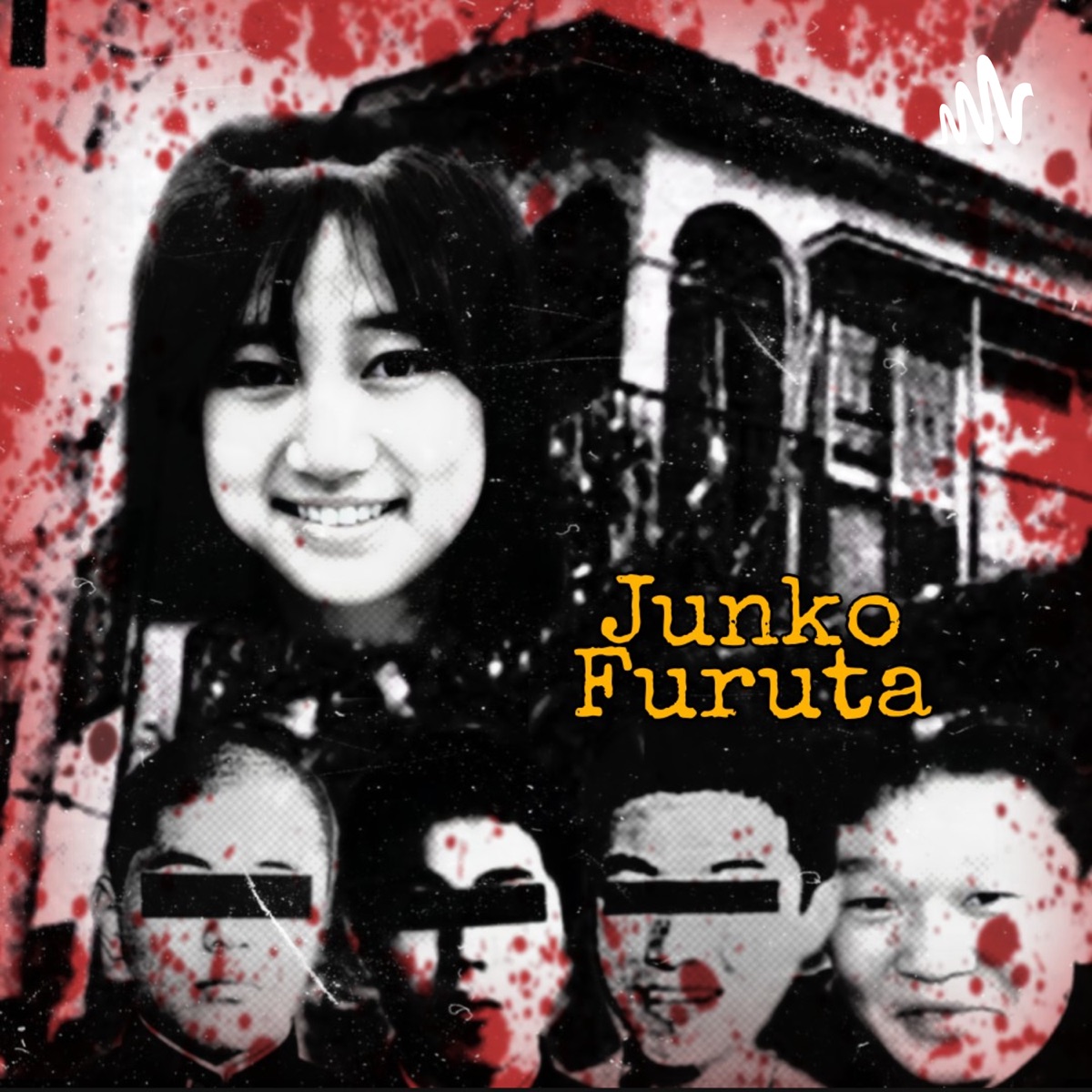Let me tell you a story that's been lingering in the shadows of Japanese society for decades. The name Junko Furuta might not ring a bell right away, but it represents one of the darkest chapters in modern Japanese history. This isn't just another crime story; it's a cautionary tale that highlights the importance of vigilance, justice, and the need for societal change. Junko's story is a reminder of how fragile life can be when evil takes over.
Back in 1988, the world was moving forward with technological advancements and globalization, but in a quiet corner of Japan, a nightmare unfolded. Junko Furuta, a 14-year-old girl, became a victim of unimaginable cruelty. Her story is not just about the crime itself but also about the societal and legal systems that failed to protect her. This is why understanding her case is crucial for anyone interested in criminal justice and human rights.
We're diving deep into this topic because it’s more than just a historical event. It’s a lesson on how far we’ve come in terms of protecting our children and how much further we need to go. So, let’s explore the life, the tragedy, and the legacy of Junko Furuta. This journey might be tough, but it’s necessary.
Read also:Bolly4upromo The Ultimate Destination For Bollywood Enthusiasts
Table of Contents
- Biography of Junko Furuta
- Early Life and Background
- The Shocking Case
- Legal Outcome and Implications
- Societal Impact and Reactions
- Media Coverage and Public Awareness
- Preventive Measures and Lessons Learned
- In the Modern Context
- Psychological Aspects of the Crime
- Conclusion and Call to Action
Biography of Junko Furuta
Before we dive into the harrowing details of the case, let’s take a moment to understand who Junko Furuta was. Junko wasn’t just a statistic or a victim; she was a 14-year-old girl with dreams, hopes, and a bright future ahead of her. Below is a quick overview of her life:
Personal Data
| Full Name | Junko Furuta |
|---|---|
| Date of Birth | December 1, 1974 |
| Place of Birth | Yokohama, Japan |
| Age at Time of Incident | 14 years old |
| Occupation | Student |
Junko was a typical teenager, living her life in a bustling city like Yokohama. But her life took a tragic turn, and her story became a symbol of the fight against child abuse and violence.
Early Life and Background
Junko grew up in a modest household in Yokohama. Like many kids her age, she attended school, hung out with friends, and had a normal life. Her parents were hardworking individuals who tried their best to provide for their family. But life changed drastically on November 25, 1988, when four high school students abducted her after a school event.
These weren't random strangers; they were acquaintances from the same school. The chilling part? They didn’t just abduct her—they held her captive for over a month, subjecting her to unimaginable horrors. This is where the story takes a darker turn, and we must address the events that unfolded.
The Shocking Case
Now, let’s get into the nitty-gritty of what happened. On that fateful day, Junko was lured into a car by these four teenagers. They took her to an abandoned house where they proceeded to torture and abuse her for 44 days. The details are harrowing, but they’re essential to understanding the gravity of the situation.
These four boys, aged between 14 and 16, inflicted physical and psychological torture on Junko. They even recorded some of their actions, which were later used as evidence in court. The case sent shockwaves through Japan and the world, highlighting the vulnerability of children and the need for stricter laws.
Read also:Movierulz2024 Your Ultimate Destination For Latest Movies And Entertainment
Key Details
- Abduction Date: November 25, 1988
- Duration of Captivity: 44 days
- Number of Perpetrators: 4
- Age of Perpetrators: 14 to 16 years old
It’s crucial to understand the context of the crime. At the time, Japan had laws that were lenient towards juvenile offenders. This case became a catalyst for change, pushing the legal system to reconsider how it handles such crimes.
Legal Outcome and Implications
When the perpetrators were finally caught, the legal system faced a dilemma. Due to their age, they couldn’t be tried as adults. This sparked a national debate about juvenile justice and the leniency afforded to minors committing heinous crimes.
Two of the boys were sentenced to life imprisonment, while the other two received shorter sentences. The leniency in sentencing was met with public outrage, and many called for reform in the juvenile justice system. This case became a turning point in Japanese legal history, leading to changes in how minors are prosecuted for serious crimes.
Legal Reforms
- Increased age limit for adult prosecution
- Stricter penalties for juvenile offenders
- Improved protection measures for victims
These reforms were necessary steps towards ensuring that justice is served fairly and effectively, regardless of the perpetrator's age.
Societal Impact and Reactions
The impact of Junko’s case extended far beyond the courtroom. It sparked a nationwide conversation about child protection, parental responsibility, and the role of society in preventing such tragedies. The Japanese public was outraged, and demands for change were loud and clear.
Community groups and activists began pushing for better education on child safety and awareness. Schools started implementing programs to teach children about the dangers they might face and how to protect themselves. The case also led to increased funding for victim support services and counseling.
Public Awareness Campaigns
- Workshops on child safety
- Hotlines for reporting suspicious activities
- Community watch programs
These efforts were crucial in creating a safer environment for children and fostering a culture of vigilance and care.
Media Coverage and Public Awareness
The media played a significant role in bringing Junko’s story to light. Newspapers, television, and radio stations covered the case extensively, ensuring that the public was informed and engaged. This coverage helped raise awareness and push for legislative changes.
However, the media also faced criticism for sensationalizing the case and potentially causing further harm to the victims and their families. It’s a delicate balance that journalists must navigate when reporting on sensitive topics. The lesson here is that media has a responsibility to report responsibly and ethically.
Role of Media
- Informing the public
- Shaping public opinion
- Driving policy changes
Media coverage can be a powerful tool for change, but it must be wielded with care and consideration.
Preventive Measures and Lessons Learned
From Junko’s tragedy, we’ve learned valuable lessons about prevention and protection. The case highlighted the need for comprehensive measures to safeguard children and ensure justice is served. Here are some key takeaways:
Steps Toward Prevention
- Implementing stricter laws for juvenile offenders
- Enhancing child protection services
- Providing education on personal safety
These steps are essential in preventing future tragedies and ensuring that every child is safe and protected. It’s a collective responsibility that we must all take seriously.
In the Modern Context
Fast forward to today, and we see how far we’ve come in terms of child protection and justice reform. However, the fight is far from over. New challenges arise with the advent of technology and the digital age, bringing new threats to children’s safety. It’s crucial to stay vigilant and adapt our strategies to meet these challenges.
Technology can be a double-edged sword. While it offers new ways to monitor and protect children, it also presents new risks. Cyberbullying, online predators, and digital privacy concerns are just a few of the issues we face today. The lessons from Junko’s case remain relevant as we navigate these modern challenges.
Psychological Aspects of the Crime
Understanding the psychological aspects of the crime is crucial in preventing similar incidents. What drives someone to commit such atrocities? How can we identify warning signs and intervene before it’s too late?
Psychologists have studied the behavior of the perpetrators and found patterns of aggression and lack of empathy. Early intervention and mental health support can play a significant role in preventing such crimes. It’s not just about punishing the offenders but also about understanding and addressing the root causes.
Key Psychological Insights
- Identifying warning signs of violent behavior
- Providing mental health support for at-risk youth
- Creating a culture of empathy and understanding
By addressing the psychological factors, we can create a more compassionate and safer society.
Conclusion and Call to Action
In conclusion, the story of Junko Furuta is a stark reminder of the importance of vigilance, justice, and societal responsibility. While we’ve made progress in protecting children and reforming the legal system, there’s still much work to be done. Every child deserves to grow up in a safe and nurturing environment, free from fear and harm.
We urge you to take action by supporting organizations that work to protect children, staying informed about child safety issues, and advocating for policies that ensure justice for all. Together, we can create a world where tragedies like Junko’s never happen again.
Share this article, leave a comment, and let’s keep the conversation going. The more we talk about these issues, the closer we get to finding solutions. Let’s honor Junko’s memory by committing to a safer future for all children.


